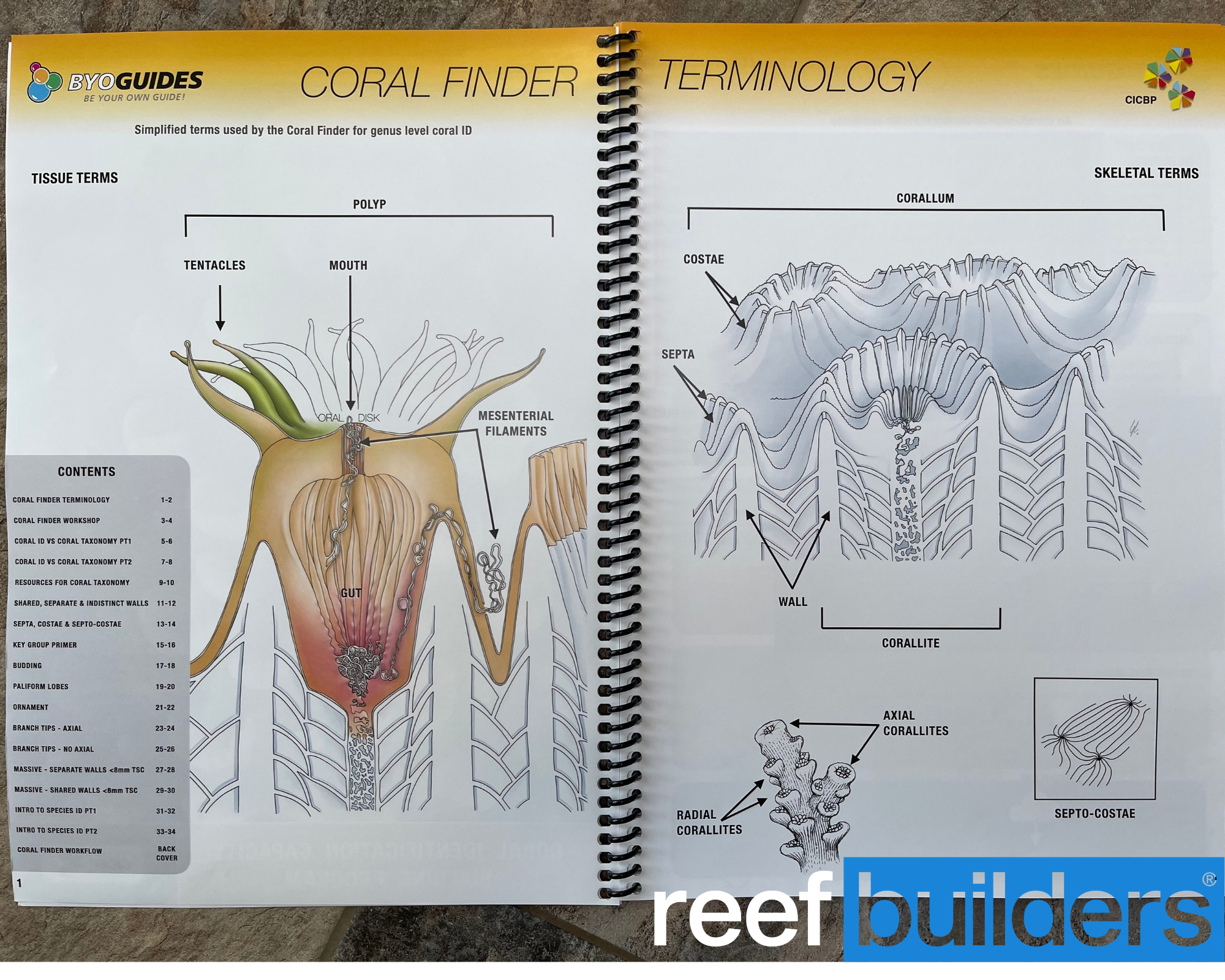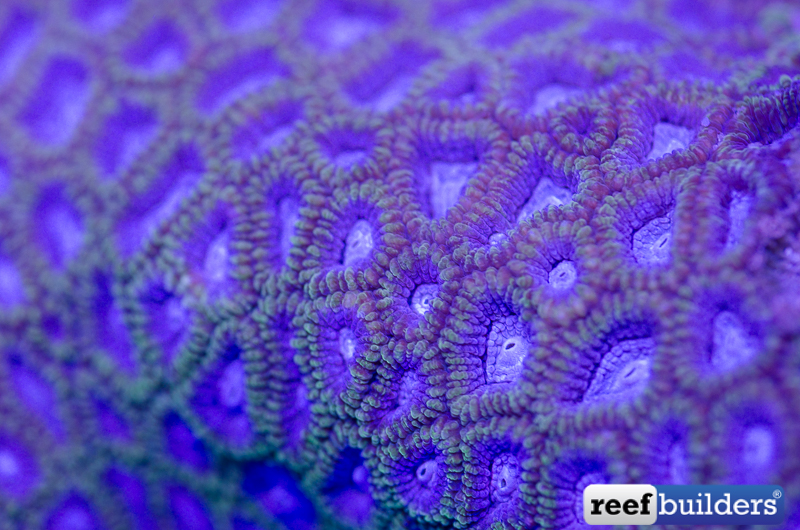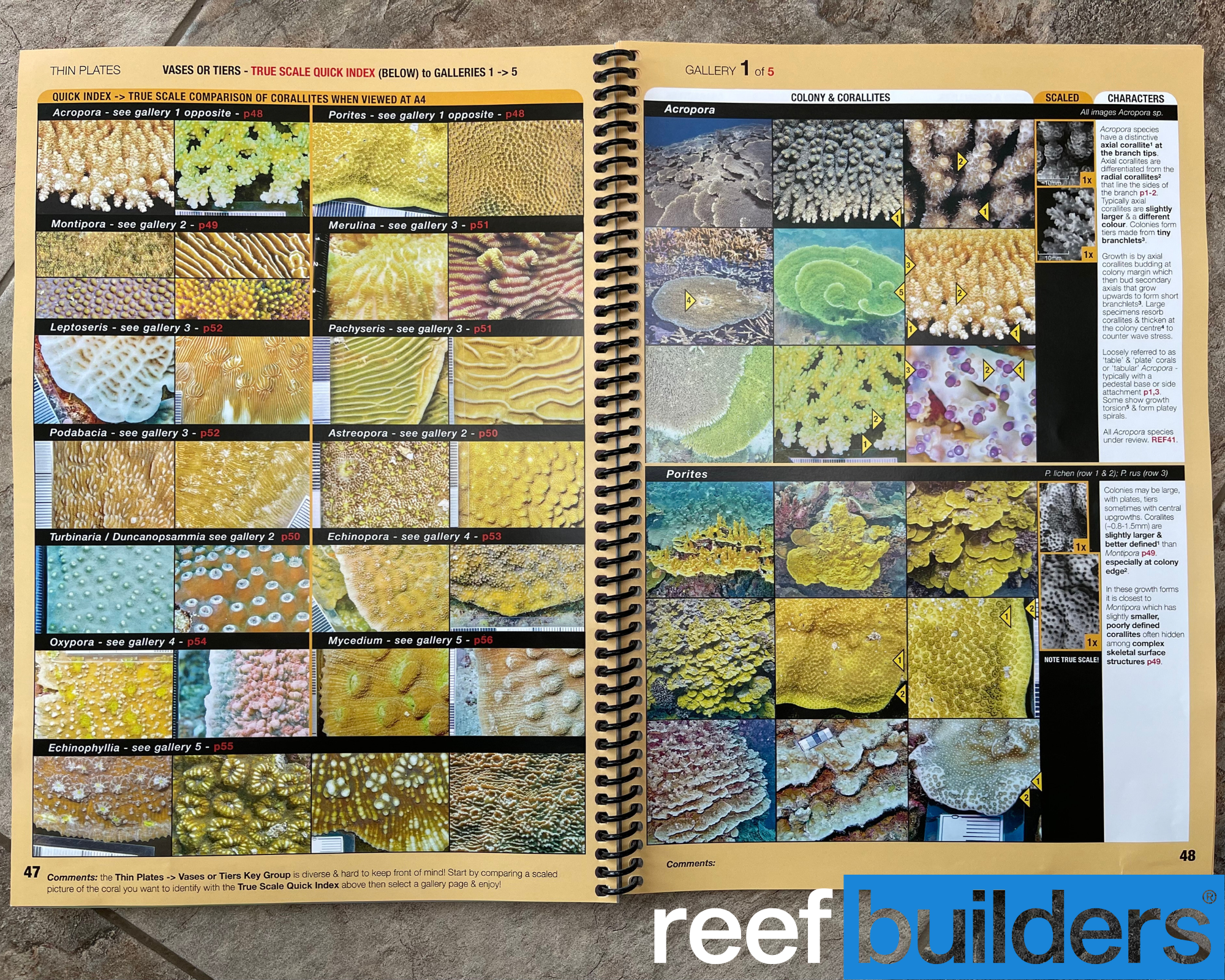We’re feeling high on reef life this week, as we’ve just finished a four day BYOGUIDES Online Coral ID workshop with Russell Kelley. As the title suggests, this virtual, live workshop is held by author and science communicator Russel Kelley with assistance from Dr. Kevin Erikson, both of the James Cook University, Queensland Australia. We attended four, four hour online live webinar sessions along with 24 other participants from around the world and collectively, the ability of the group went from a 5.9 to 13.3 average out of 15, when quizzed on identifying a wide range of Indo pacific hard corals to genus level, and it feels great.

“Where is the mouth?”
Everyone knows the basics of what a coral polyp constitutes, like a mouth, a gut and tentacles, but the Coral ID workshop drills down into the features of what a hard coral polyp lives within – the corallite, and then highlights key defining features in corallites like the septa, the wall, the costae and the septo costae. Compare the form, size, texture or even absence of some of these features in a coral you’ve never seen before, as well as where the actual polyp and corallite are situated in the first place, and the easy to follow guide gives you all the tools you need to navigate an unidentified hard coral in the field, find a match for its features, and identify it to genus level. Up to date genus level too, and as corals are reclassified in the future, so will the Coral Finder. It helps when you have some of the world’s leading coral taxonomists working on the same campus!
We learned that when it comes to coral ID, scale matters, especially the diameter of the coralite, the walls, or the valleys that the corallites reside in. We learned to identify the type of corallite – essential for quick Acropora genus ID, as well if each corallite had shared, separate or no walls. We learned to split quick classification into if the coral was branching, plating, or encrusting, thick or thin, massive or sub massive as well as types of branching like tabular, arborescent, digitate or hispidose. Some of this is obvious to the semi-skilled reefkeeper and already in shared lingo, but then when you consider that Isopora and Porites can appear in many very different forms, it’s back to that scaled comparison of the individual corallites which will help point to a positive, informed identification.

We learned how to tell Pachyseris from Leptoseris, Oxypora from Echinophyllia, Oulophyllia from Platygyra and Goniastrea from Astrea, Dipsastrea, Plesiastrea, Diploastrea and Favites. If you still refer to many of those as “Favia,” a genus that isn’t even in the Indo Pacific the workshop confirmed, and you can’t really go far beyond shared walls and separate walls, this course may be for you.
25 people from 11 countries attended our course, held at EU friendly times, with another course to suit other world time zones, and over 1500 people have attended the online coral ID workshop so far. It suited us because we could study from home for four hours in the morning, then have the rest of the day to catch up on our day job, and we could do the whole thing in our slippers! Any form of course or education may give people the fear, but it was friendly, humorous at times, and we’d like to think that even if a lay person attended the course with no coral knowledge whatsoever, they would be able to identify the petaloid shapes formed by Psammocora every time, afterwards.

Approachable, user friendly content
Russell says a key feature of what he does at BYOGUIDES is “synthesize a complex fast moving field into approachable user friendly content / tools.” As far as he is aware there is no other source for this information other than unreadable journals, and he’s moved to a print-on-demand annual update for the Coral Finder so that we can all track the science in a timely fashion. “In a field like this any book published in the traditional way (warehoused) is out-of-date before it hits the shelves.”
We paid $AU685 for the 16 hour, four day course, and have registered a strong interest for if Russell ever has the time to create another one for Soft coral ID, or even a more specialized course just for Acropora, as both have had/are having major taxonomic overhauls. Russell terms himself a “science communicator,” and it’s that translation from scientific abstract to learnable, usable everyday ID tools that we craved, and he does so well. Massive thanks to Dr. Kevin P. Erikson too.
More details on the course and the Coral Finder are available here https://byoguides.com/pages/contact-us



